1950s Wool, Haberdashery
and Paper Patterns
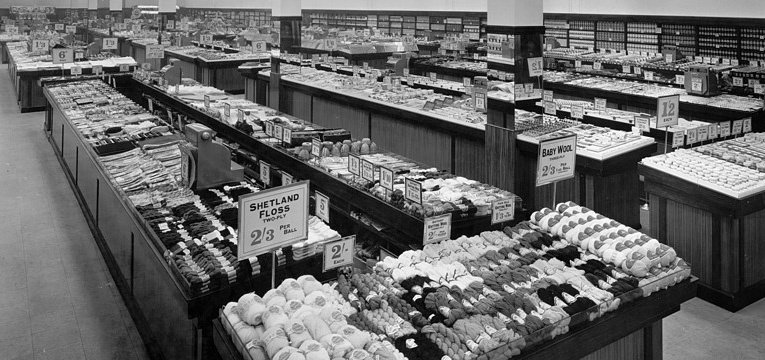
The Fifties generation had lived through a period of severe austerity, when new clothes were in short supply as the factories worked flat-out to support the war effort. People had learned to 'make and do and mend' and put their skills to good use as clothes continued to be rationed until 1949. Some were ambitious enough to make their own clothes from scratch, while many families handed down clothes from older to younger children, taking them in or letting them down as required.
Woolworth stores were there to help. Every branch had a large haberdashery department. It stocked needles and thread, elastic and wool and yarn not only by the ball but also on small cards for minor repairs. There were also button, fasteners and zips. With new hosiery stocks in short supply a particularly popular line was a repair kit for tights and stockings, which included threads in a range of common shades.
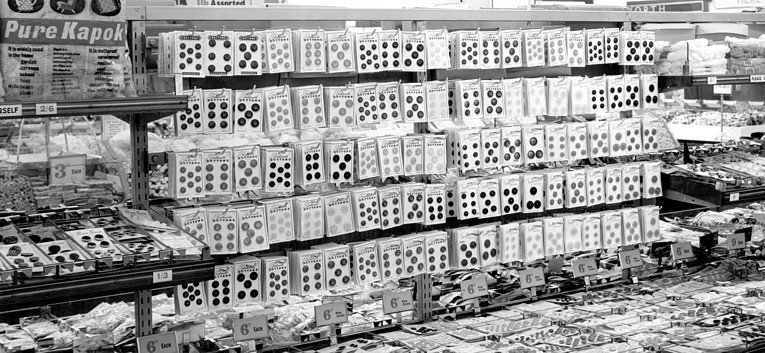
As the decade continued the ranges of buttons and zips became larger and more colourful. During the same period the number of wooden, metal and bakelite buttons fell dramatically as new plastics and polyester designs took their place. Another key feature of the period was that the counters got taller, as extension pieces were bolted onto the traditional counter-tops to put shelves above the glass dividers. This allowed more items to be displayed.
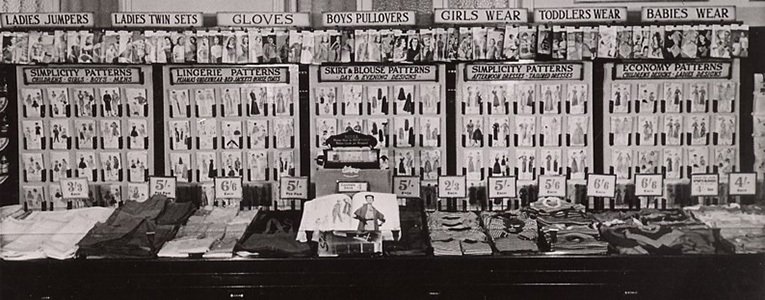
One best selling range from the 1920s and 1930s staged a revival in the 1950s. The stores had built a strong reputation for selling dressmaking patterns before the War, which helped customers to make fashionable clothes cheaply for themselves. Sales had declined during the War, while material was in short supply and people had to dismantle and re-use old clothes. As rationing came to an end, the firm reintroduced displays of their exclusive DuBarry patterns and were surprised by the level of take-up from customers young and old. The marketing for the patterns highlighted the potential savings, suggesting that garments could be made at home for only a tenth of the price of shop-bought clothes
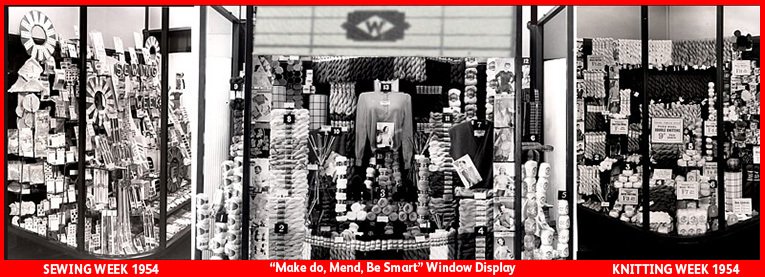
The popularity of haberdashery in-store meant that it featured in occasional elaborate window displays at the store front. The early autumn, when the clocks changed, marked sewing week and then wool week, with the motto "make do, mend, be smart". A good show at the store front and the dark nights could stimulate a trebling of sales on the range.
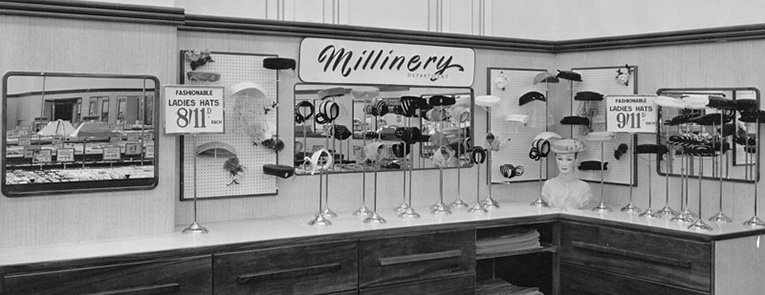
Woolworth's experimented with a hat department in some of their largest stores as part of a wider move into fashion. Company bosses believed that as most customers wore hats it was worth testing some of the styles offered in the parent company's American stores. The haute-couture designs from New York's Fifth Avenue were striking but nothing like the caps, berets and trilbies worn in Britain. The prices of nine to ten shillings (45p to 50p), were up to twenty times higher than the firm's pre-war maximum. The sales figures were mediocre, so the department only ever appeared in the largest stores.
Navigation Links
Pictures, artificial flowers and fancy goods
Christmas cards and decorations
Children's, Men's and Ladies' Fashions
Shortcuts to related content
1950s Gallery
H.M. Queen Elizabeth II's Coronation
Fiftieth birthday celebrations
Museum Navigation